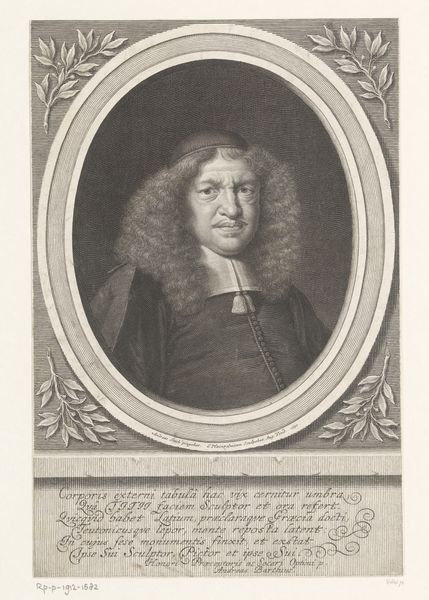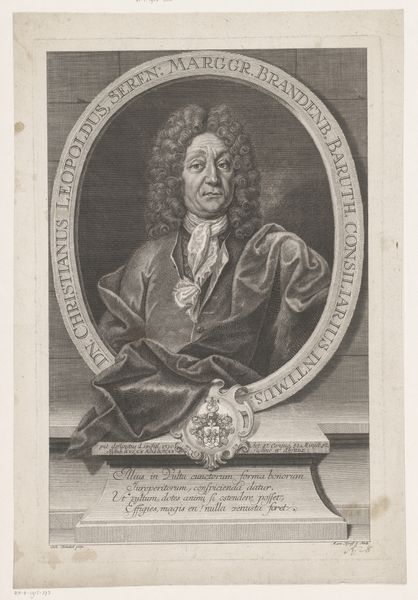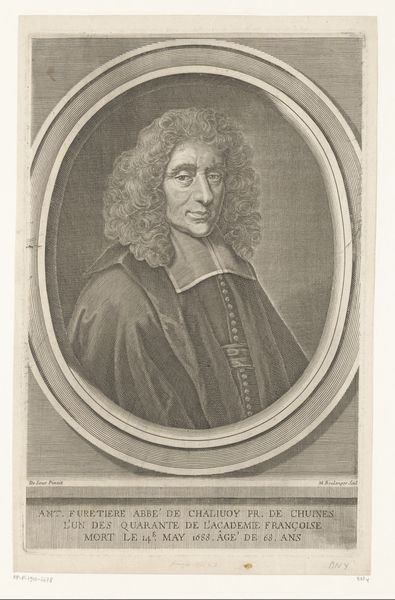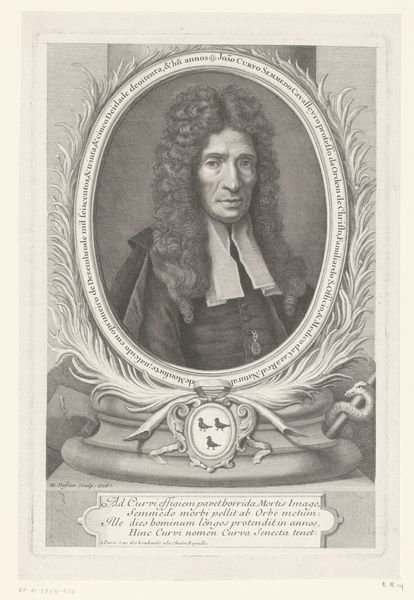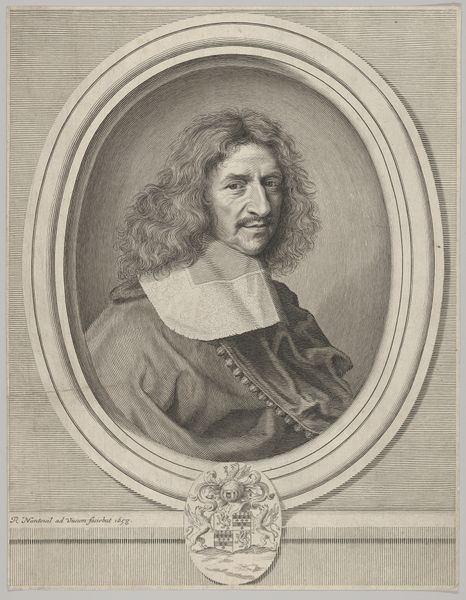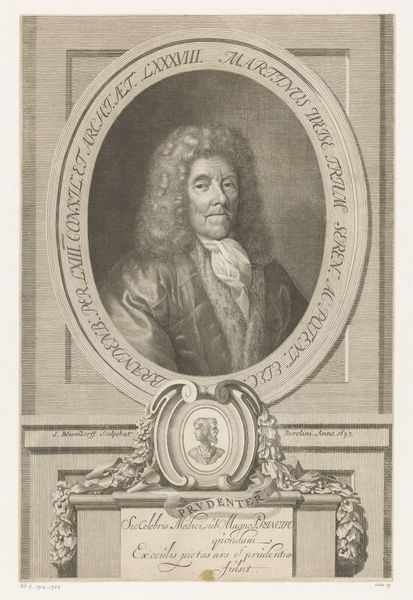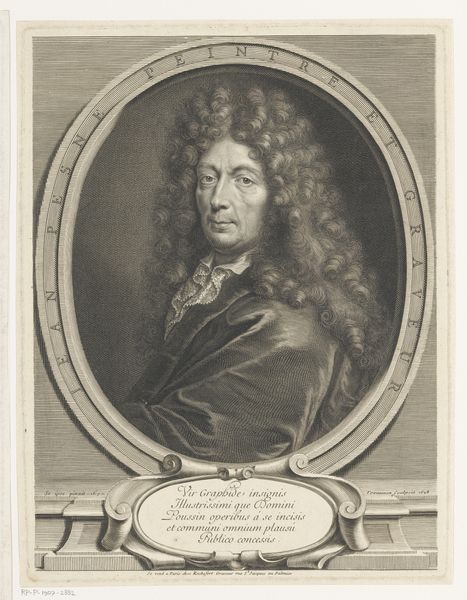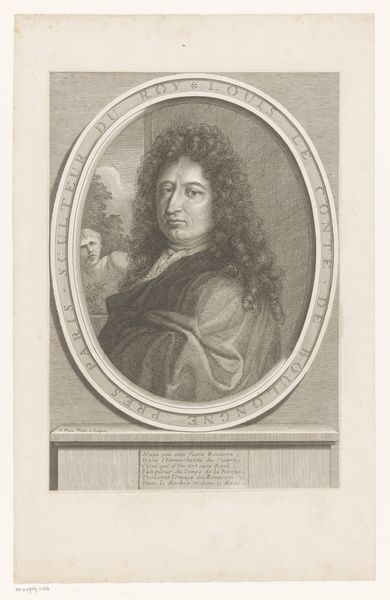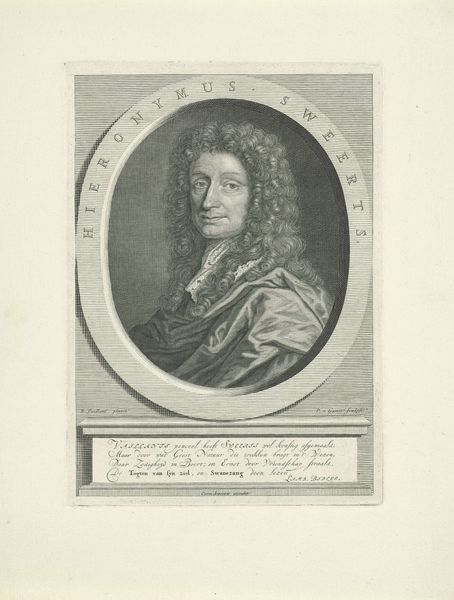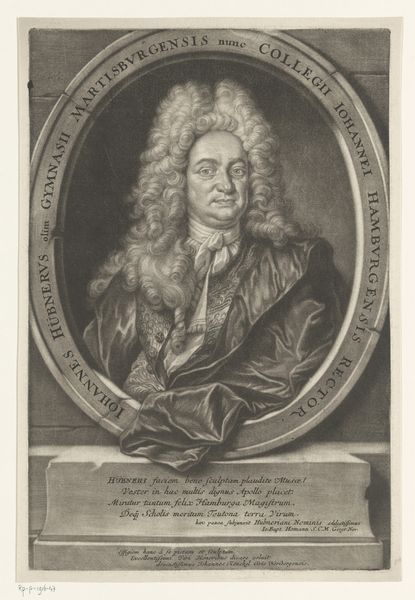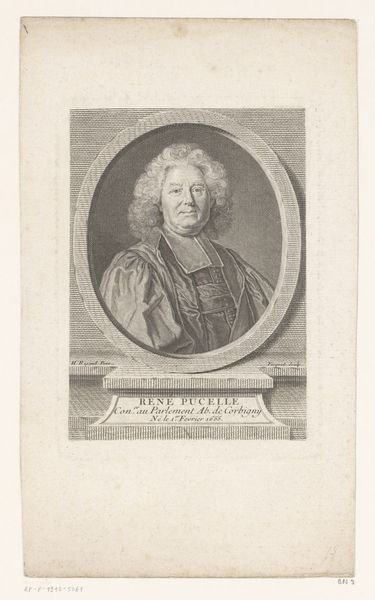
print, engraving
#
portrait
#
baroque
# print
#
old engraving style
#
portrait reference
#
history-painting
#
engraving
#
historical font
Dimensions: height 228 mm, width 145 mm
Copyright: Rijks Museum: Open Domain
Curator: What a remarkable study in contrasts! Here we have "Portret van Sébastien-Joseph du Cambout," an engraving created sometime between 1642 and 1721 by Etienne Picart. Editor: It has this kind of somber dignity to it. The swirling, almost chaotic texture of the hair sharply contrasts the stiff formality of his attire and bearing. I’m already thinking about the plate it came from, and the engraver’s labor. Curator: A shrewd observation. Formally, consider how Picart employs the oval frame. It traps the eye, focusing all the attention on Du Cambout's face. There's a real psychological intensity there, enhanced by the detail in the hatching and cross-hatching used to create light and shadow. Editor: And the density of the engraving work must have been a real undertaking. What sort of tools did he employ to bring that to fruition? What’s even more curious, however, is the text below—a biographical eulogy? This all adds layers to our understanding of the subject, of course, and Picart’s intentions, but equally I keep asking myself about who was involved in the whole print production; the engraver, yes, but where were the materials from and what kind of distribution networks were employed in getting it “out there”? Curator: Indeed, the textual element is integral. It situates the portrait within a very specific historical and social context, functioning almost like an extended title. We can interpret the combination of image and text as an assertion of Du Cambout's identity. Look how he seems caught in a very particular moment of self-representation! Editor: All that considered, however, let's acknowledge the manual skill evident in Picart’s craft! Every mark in this engraving has been precisely placed and he must have felt immense control in pushing and manipulating this material under his control. It bridges this interesting divide between commercial print and what one would consider to be ‘high art’. Curator: Agreed. Picart manipulates what were ostensibly industrial processes with masterful skill, investing an unexpected grace into his portrayal of a Baroque-era figure. The whole piece represents a synthesis of visual refinement. Editor: It certainly gives us ample scope to probe not just who is portrayed, but how, where, and in what context such materials circulated back then!
Comments
No comments
Be the first to comment and join the conversation on the ultimate creative platform.
